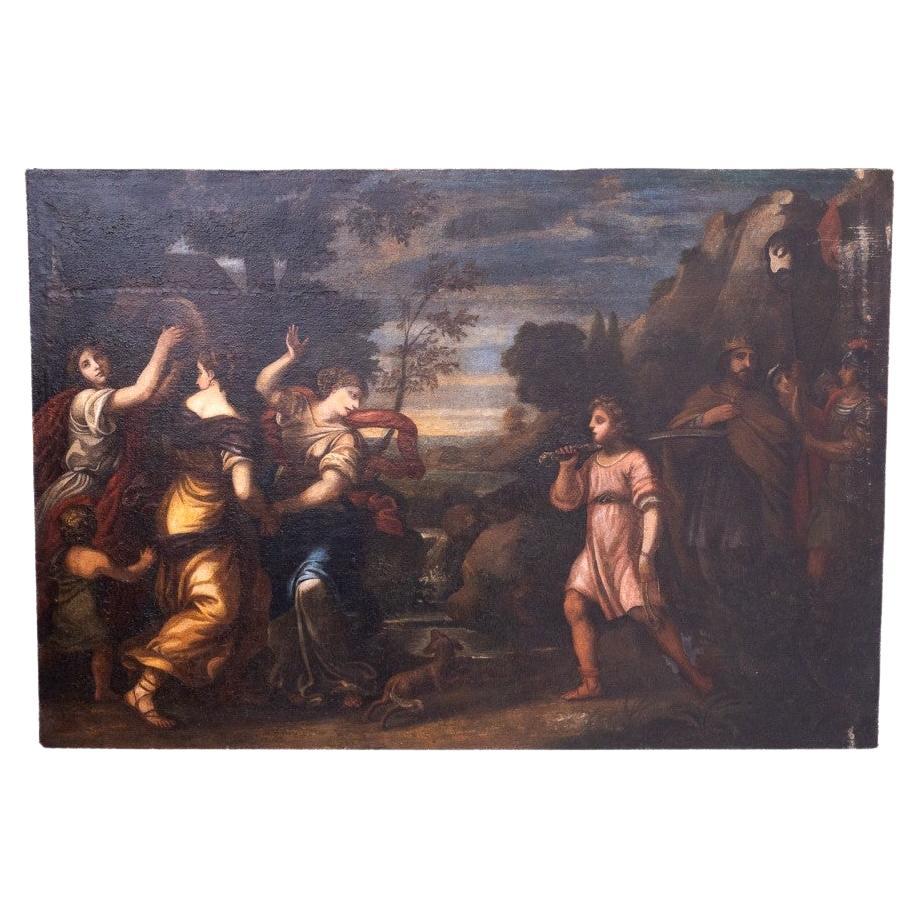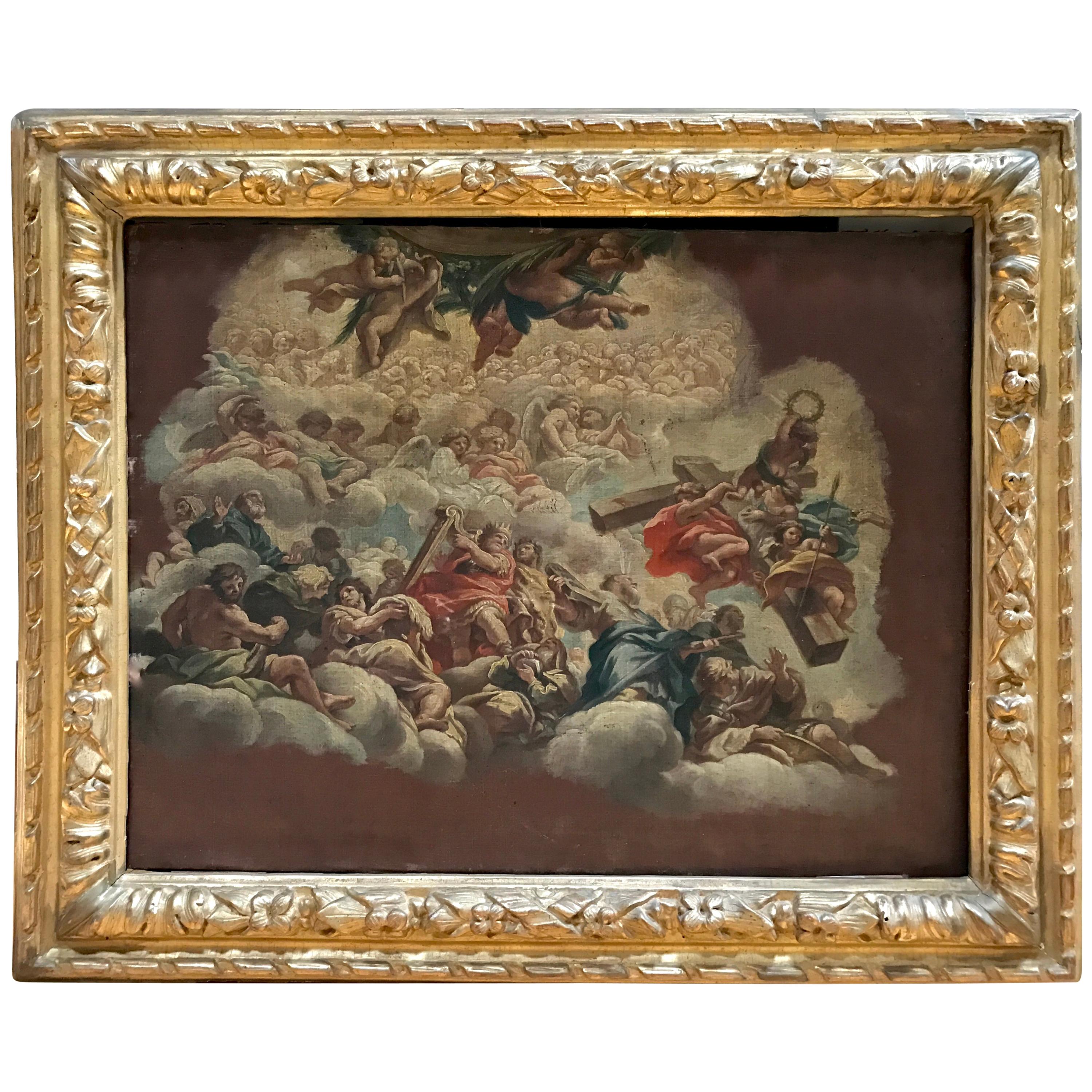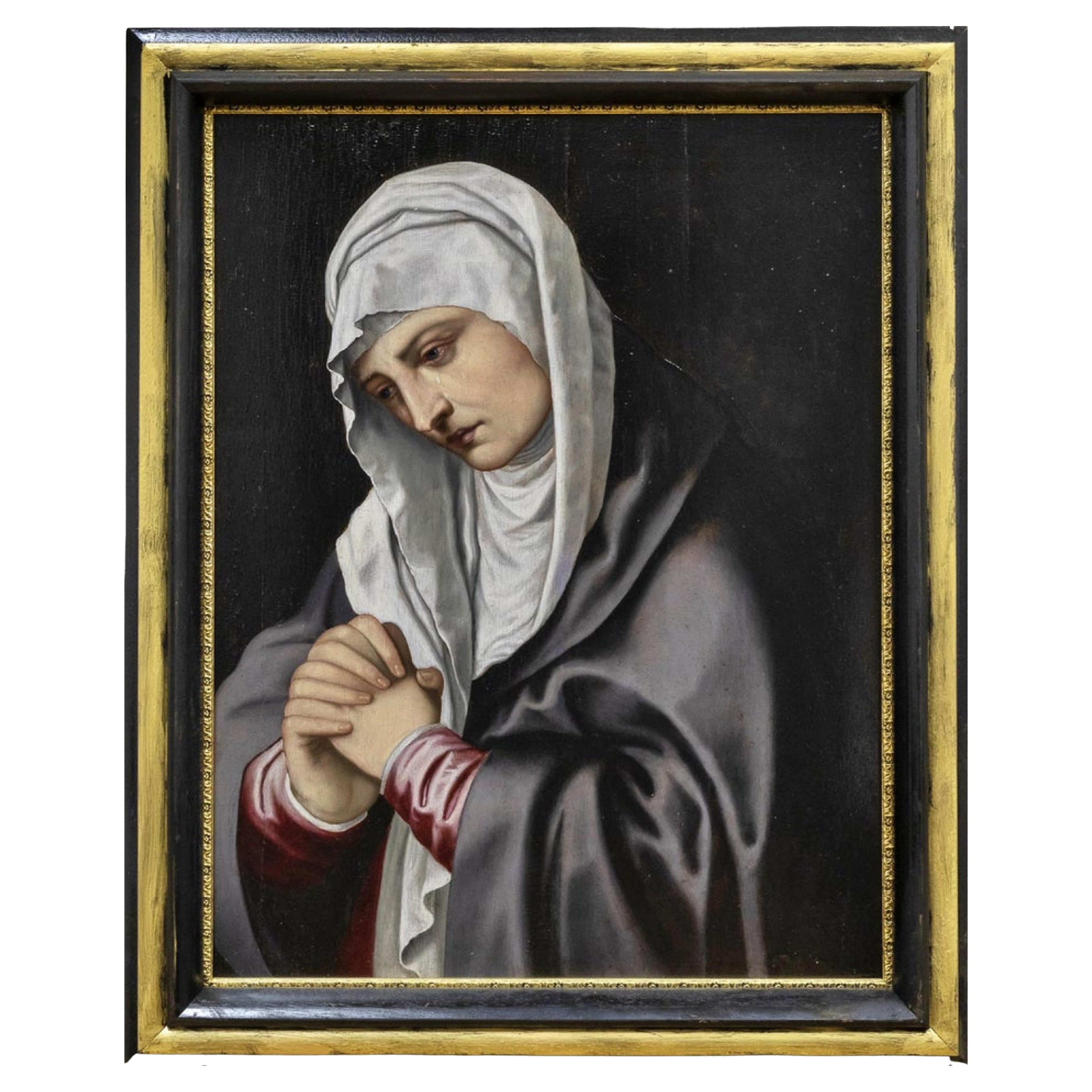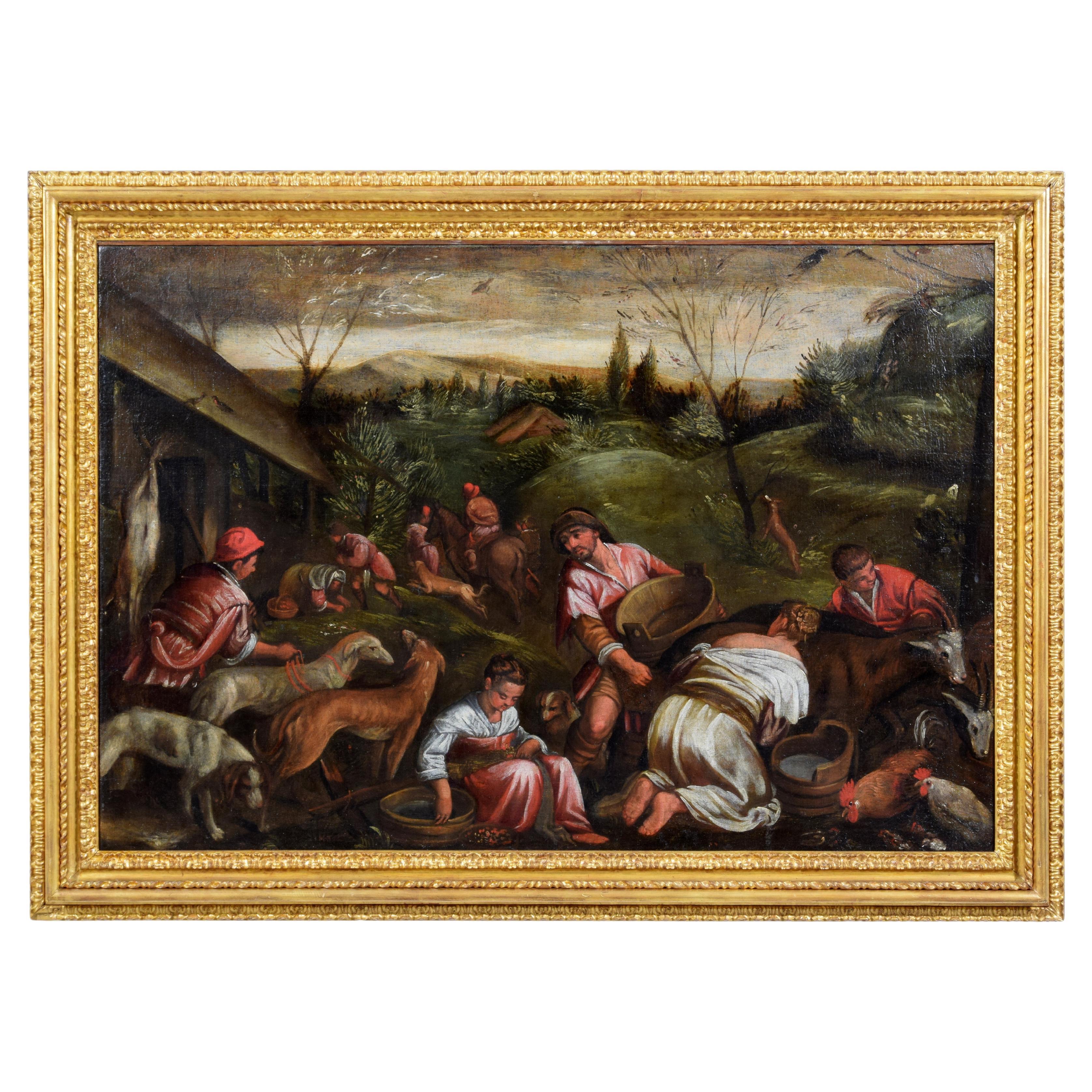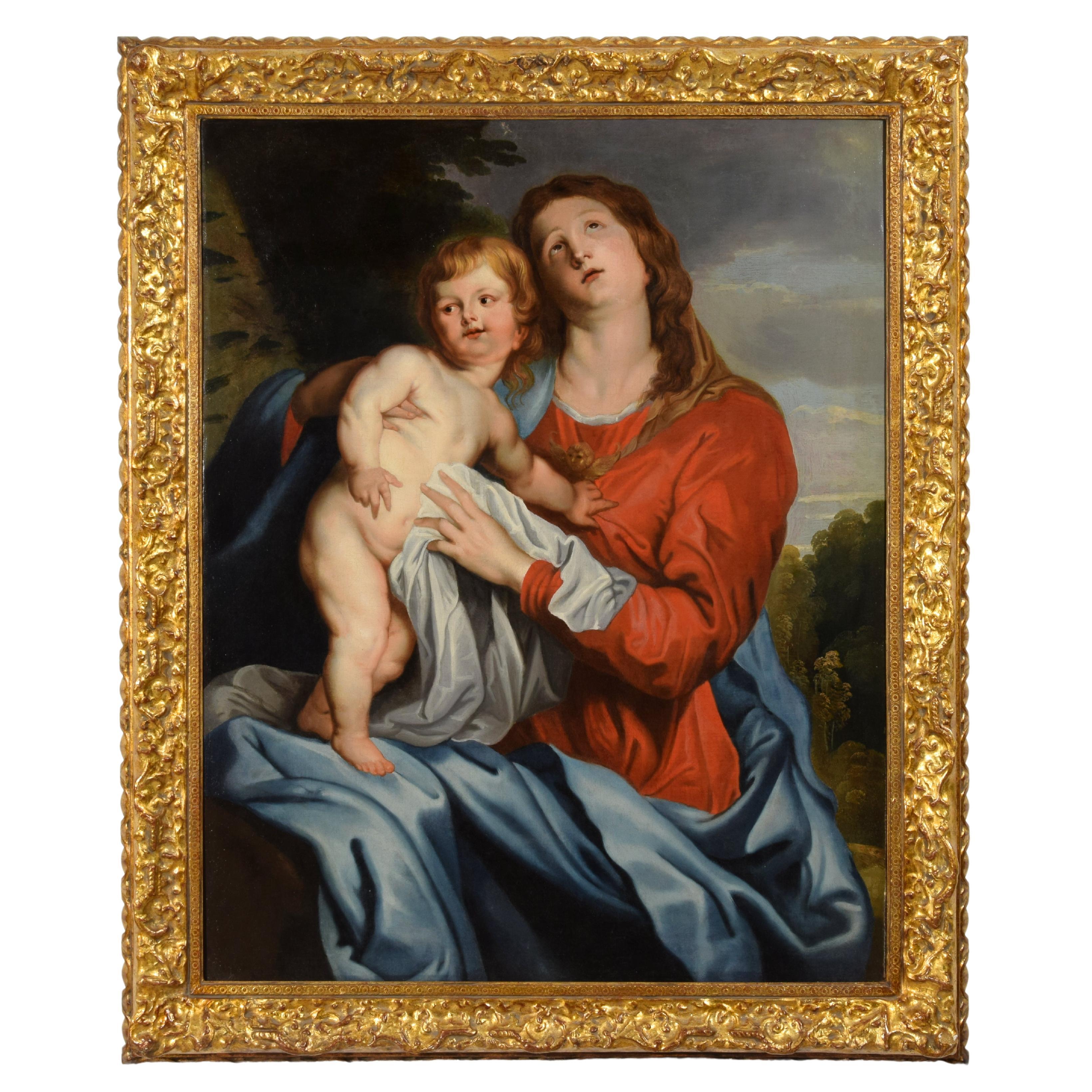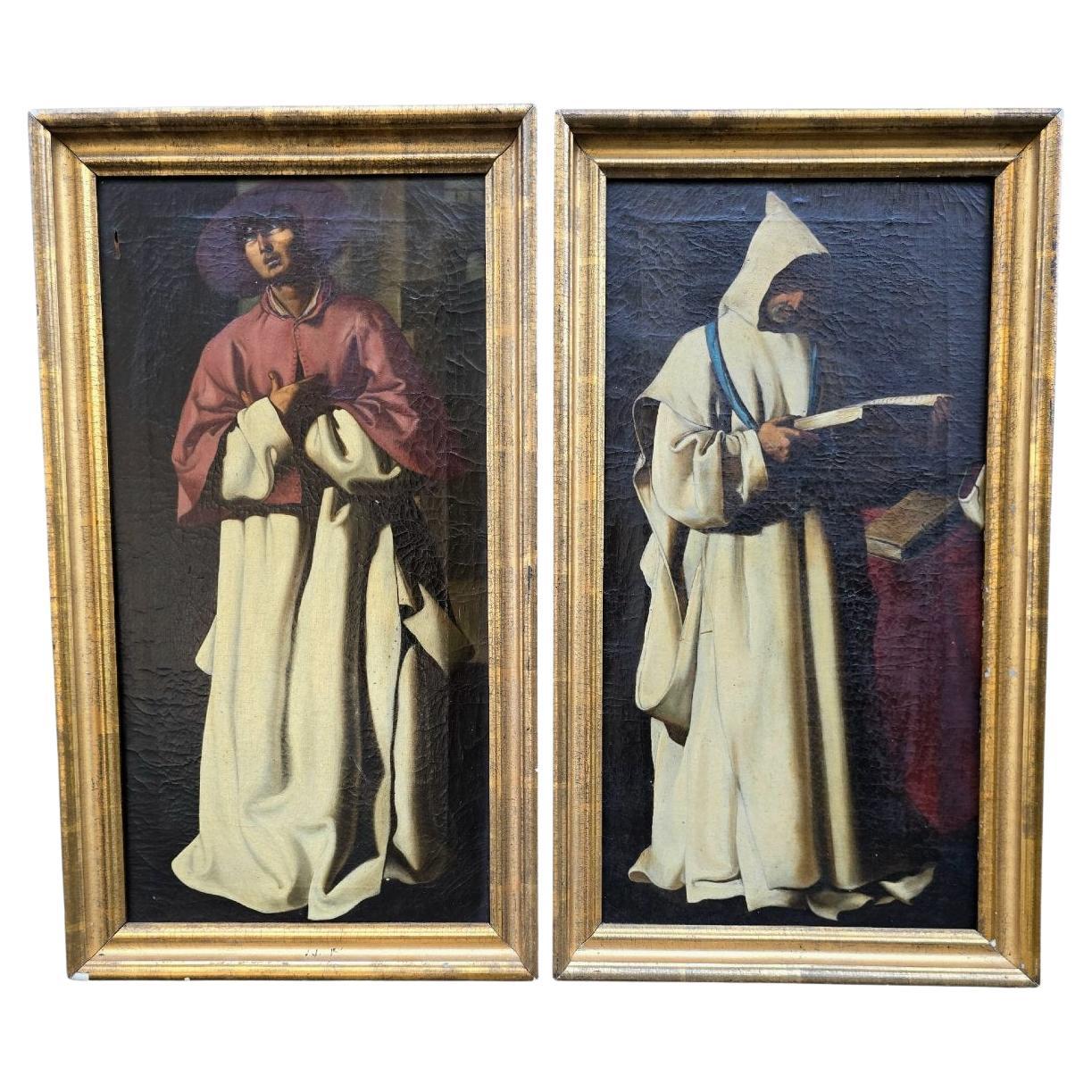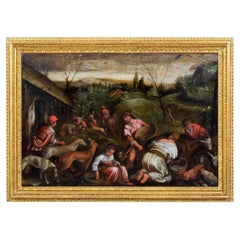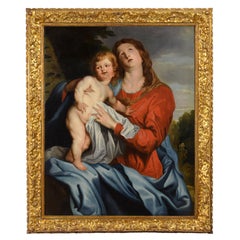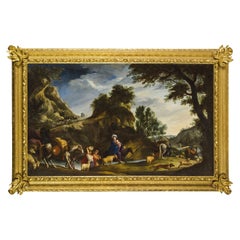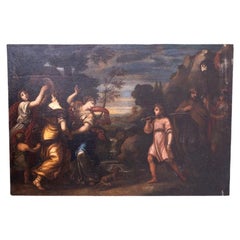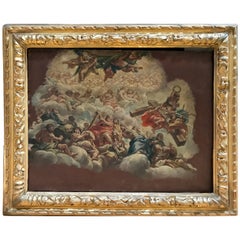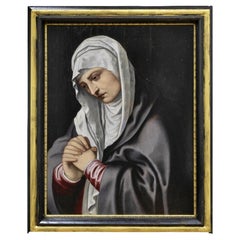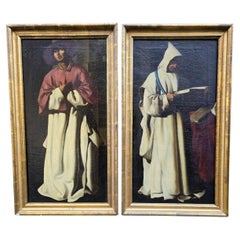Items Similar to 17th Century, Italian Follower of Pietro da Cortona, Alliance of Jacob and Laban
Want more images or videos?
Request additional images or videos from the seller
1 of 6
17th Century, Italian Follower of Pietro da Cortona, Alliance of Jacob and Laban
On Hold
$18,471.87
On Hold
£13,679.84
On Hold
€15,500
On Hold
CA$25,448.97
On Hold
A$28,294.84
On Hold
CHF 14,898.95
On Hold
MX$343,301.56
On Hold
NOK 188,628
On Hold
SEK 176,321.21
On Hold
DKK 117,983.38
About the Item
17th century, Italian follower of Pietro da Cortona, Alliance of Jacob and Laban
The oil painting on canvas depicts the alliance of Jacob and Laban. The subject is inspired by a canvas by Pietro da Cortona (1596-1669), kept in the Louvre Museum and made circa 1630-1635.
The Italian painter, capable student or vigorous follower of the master and therefore realizes this work after 1635, chooses to depict only the right side of the composition of Pietro da Cortona, or the scene in which Jacob and Laban come to the pact, Except for the portion on the right in which Leah and Rachel are depicted, the two wives of Jacob and the daughters of Laban, while Rachel hides the idols under her clothes.
The story is told in the Bible, where Laban, Rebecca’s brother, gave shelter to his nephew Jacob, who sought refuge from the wrath of Esau, and promised to give him in marriage to his daughter Rachel, on condition that he worked for him for seven years. But when the time came for the marriage, he substituted for Rachel the firstborn Leah. Jacob, too late to notice the deception, had to commit to another seven years of work to marry Rachel. After years of service, Jacob asked to be paid with every dark-coloured garment among the sheep and every spotted and dotted garment among the goats. Laban accepted and sent away from his sons all the leaders of that kind. So, Jacob took fresh branches of poplar, almond and plane tree, and flayed them, and put them in the troughs. The optical suggestion induced the goats and the sheep to conceive and give birth to dark, striped and dotted garments. He also ensured that all the strongest and healthiest leaders of the flock of Laban would drink near the barked branches, thus assuring a genetic superiority to his part of the flock. His flocks grew numerous and strong and he became richer than his relative, arousing envy. It was clear that Laban would not respect him much longer. At the suggestion of the Lord, Jacob decided to return to Canaan. Trying to avoid any possible dispute, he left with his family while Laban was absent for shearing sheep. But when, three days later, his uncle returned home, he became angry, feeling offended because Jacob had gone secretly and had not allowed him to greet his daughters and grandchildren. In addition, his teraphim, statuettes, or idols, which depicted the family deities, had disappeared. After 7 days of pursuit, Laban and his men reached Jacob’s group on Mount Gilead, in the mountainous region west of the Euphrates River, where his uncle and grandson had a stormy conversation. The younger man was outraged at being accused of stealing idols and told Labano to rummage through his family’s tents at will. Neither of them could know or even imagine that it was Rachel who took the idols and hid them in the saddle of the camel. During the search, she sat down firmly on the saddle, apologizing for not being able to get up, «because I usually have what happens to women» (Gen 31:35). So, the loot wasn’t discovered.
The airy and serene landscape frames a story with a happy ending: after a series of contrasts Jacob makes peace with his father-in-law Laban. A kid is about to be sacrificed to establish peace and the border between their respective riches: Jacob can separate from Laban and resume with his family the journey to his homeland.
The airy and serene landscape frames a story with a happy ending: after a series of contrasts Jacob makes peace with his father-in-law Laban. A kid is about to be sacrificed to establish peace and the border between their respective riches: Jacob can separate from Laban and resume with his family the journey to his homeland.
The subject, the alliance of Jacob and Laban, was much loved by collectors since the seventeenth century: the Barberini commissioned the painting to Pietro da Cortona, the great artist habitué of the palace, and later made a copy of it by his best student, Ciro Ferri, now on display at Galleria Corsini.
This version testifies to the luck of the subject and the desire of several nobles to own a version for their own home.
The canvas, in good condition, is very decorative and of particularly suitable dimensions to be exposed in any environment, facilitated by the vertical cut that makes it suitable for a corridor or an entrance hall, a study or a living room.
- Similar to:Pietro da Cortona (Artist)
- Dimensions:Height: 66.93 in (170 cm)Width: 38.19 in (97 cm)Depth: 1.97 in (5 cm)
- Style:Baroque (Of the Period)
- Materials and Techniques:
- Place of Origin:
- Period:1640-1649
- Date of Manufacture:1640-1649
- Condition:Wear consistent with age and use.
- Seller Location:IT
- Reference Number:1stDibs: LU4405222656172
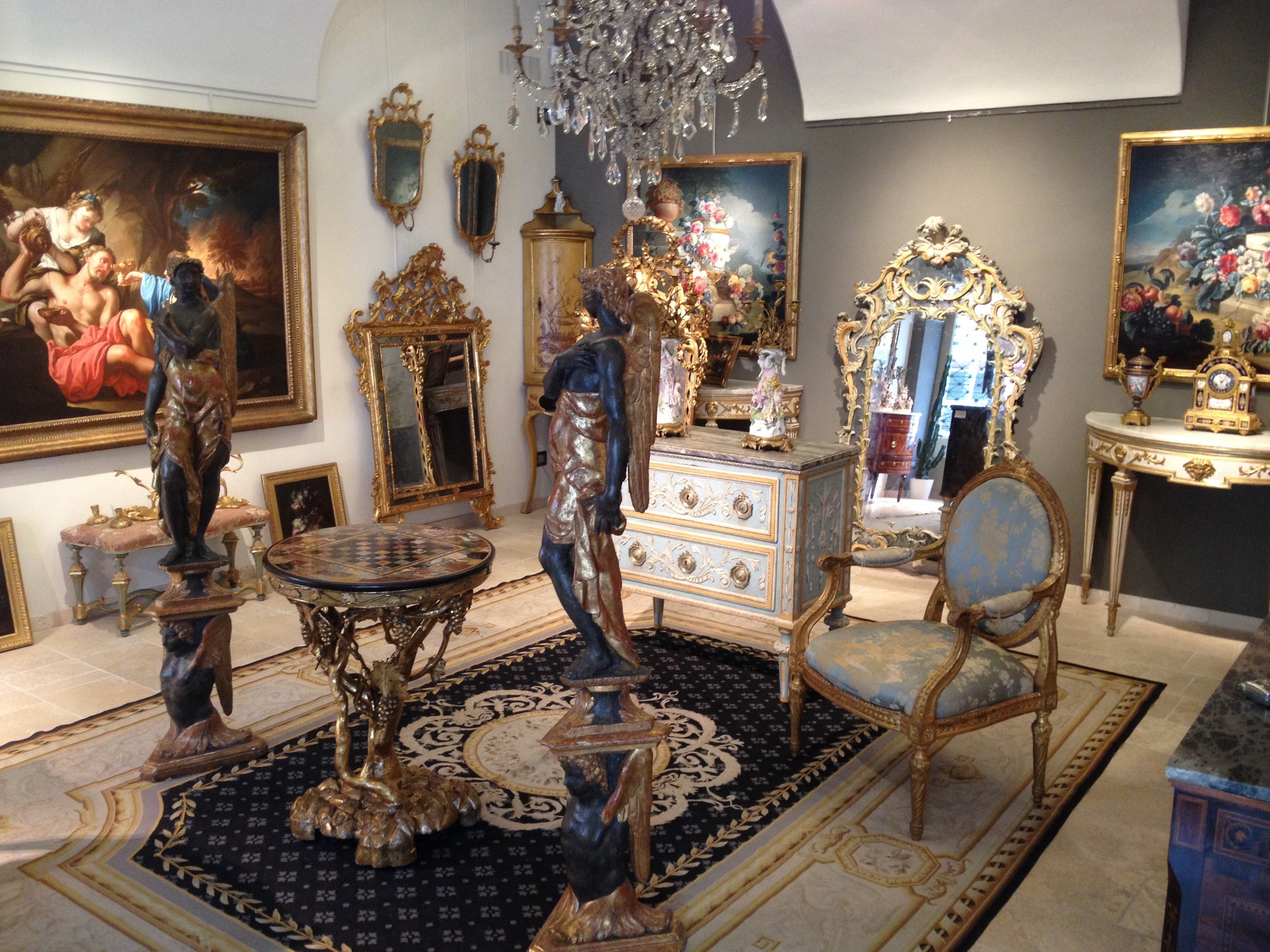
About the Seller
5.0
Platinum Seller
Premium sellers with a 4.7+ rating and 24-hour response times
Established in 1980
1stDibs seller since 2019
56 sales on 1stDibs
Typical response time: <1 hour
- ShippingRetrieving quote...Shipping from: Italy
- Return Policy
Authenticity Guarantee
In the unlikely event there’s an issue with an item’s authenticity, contact us within 1 year for a full refund. DetailsMoney-Back Guarantee
If your item is not as described, is damaged in transit, or does not arrive, contact us within 7 days for a full refund. Details24-Hour Cancellation
You have a 24-hour grace period in which to reconsider your purchase, with no questions asked.Vetted Professional Sellers
Our world-class sellers must adhere to strict standards for service and quality, maintaining the integrity of our listings.Price-Match Guarantee
If you find that a seller listed the same item for a lower price elsewhere, we’ll match it.Trusted Global Delivery
Our best-in-class carrier network provides specialized shipping options worldwide, including custom delivery.More From This Seller
View All17th Century, Italian painting Allegory of the Spring Follower of Jacopo Bassano
By Jacopo Bassano
Located in IT
Follower of Jacopo Da Ponte, called Jacopo Bassano (Bassano del Grappa, circa 1510 - Bassano del Grappa, 13 February 1592), 17th century
Allegory of the Spring
Measures: With frame: ...
Category
Antique Late 17th Century Italian Baroque Paintings
Materials
Canvas
17th Century, Italian Painting with Virgin and Child by Follower of Van Dyck
By Anthony van Dyck
Located in IT
17th century, Italian painting with virgin and childr by Follower of Sir Anthony van Dyck
cm W 90 x H 113; cornice cm W 111 x H 135 x D 7
The canvas depicts the Madonna with the Chi...
Category
Antique Late 17th Century Italian Baroque Paintings
Materials
Canvas
17th Century, Italian Painting by Pier Francesco Cittadini, Jacob and his Family
Located in IT
Pier Francesco Cittadini (Milan, 1616-Bologna, 1681)
"Jacob and his family go to Egypt"
Oil on canvas, cm 109 x 190 (canvas only)
The valuable painting, made in oil on canvas, depicts Jacob and his family go to Egypt and we believe it can be, given the high quality painting, autograph work of Italian Pier Francesco Cittadini (Italy Milan, 1616 - Bologna, 1681) made after 1647. The work, in excellent condition is accompanied by a coeval frame in wood finely carved and golden.
The scene depicted, which was confused with the Flight to Egypt in the past years, is instead identified with the biblical episode of Jacob’s journey. In the foreground, reading the painting from left to right, we see a caravan composed of animals, including donkeys, dromedaries, goats, dogs and horses and people, women, men and slaves, who carry on their journey along the banks of a river, following a path that to the right, would seem to lead to the through of a bridge. In addition to the watercourse is described an environment characterized by large rocks and impervious come far to cover the entire verticality of the canvas. On the left, in the distance, we see the tail of the caravan that runs along the steep path. Large trees enliven and harmonize the environment, as well as white and grey clouds characterize the predominantly clear sky and illuminated on the right by sunlight.
The story is told in the Bible, Book of Genesis, 30, 25, passage in which is described the flight of Jacob from Haran after the contrasts with Laban, father of his wife Rachel. Jacob is the third great patriarch of the Bible. From his descendants originate the twelve generations of the people of Israel. He is the son of Isaac and Rebekah, who led him to flee from the wrath of Esau to Haran to seek refuge from his brother, Laban. At his uncle’s house Jacob met his daughter Rachel. As soon as he saw his cousin, Jacob was taken. Jacob will stay seven years in the service of Laban to marry his beloved Rachel. But Laban, with a deception, will give him in marriage first Lia, the least beautiful eldest daughter, and only after another seven years the splendid Rachel. From his first wife he will have several children, while Rachel will give birth to the beloved son, Joseph, who will become viceroy of Egypt.
After years of service, Jacob asked to be paid with every dark-coloured garment among the sheep and every spotted and dotted garment among the goats. Laban accepted and sent away from his sons all the leaders of that kind. So Jacob took fresh branches of poplar, almond and plane tree, and flayed them, and put them in the troughs. The optical suggestion induced the goats and the sheep to conceive and give birth to dark, striped and dotted garments. He also ensured that all the strongest and healthiest leaders of the flock of Laban would drink near the barked branches, thus assuring a genetic superiority to his part of the flock. His flocks grew numerous and strong and he became richer than his relative, arousing envy. It was clear that Laban would not respect him much longer. At the suggestion of the Lord, Jacob decided to return to Canaan. Trying to avoid any possible dispute, he left with his family while Laban was absent for shearing sheep. But when, three days later, his uncle returned home, he became angry, feeling offended because Jacob had gone secretly and had not allowed him to greet his daughters and grandchildren. In addition, his teraphim, statuettes, or idols, which depicted the family deities, had disappeared. After 7 days of pursuit, Laban and his men reached Jacob’s group on Mount Gilead, in the mountainous region west of the Euphrates River, where his uncle and grandson had a stormy conversation. The younger man was outraged at being accused of stealing idols and told Labano to rummage through his family’s tents at will. Neither of them could know or even imagine that it was Rachel who took the idols and hid them in the saddle of the camel. During the search, she sat down firmly on the saddle, apologizing for not being able to get up, «because I usually have what happens to women» (Gen 31:35). So the loot wasn’t discovered.
The author of this work was inspired by the composition of an engraving by Stefano Della Bella (1610-1664) of circa 1647. The engraving by Stefano della Bella bears the title "Iacob sur ses vieux jours quitte sans fascherie pour voir son filz Ioseph, sa terre et sa patrie" and is signed on the bottom left "Stef. of the Beautiful In. et fe." while on the right it is declared "Cum privil. Regis", that is with license of the king.
Stefano Della Bella (Italy - Florence, May 18, 1610-Florence, July 12, 1664) was born in a family of painters, sculptors and goldsmiths and was left early orphan of his father sculptor, he dedicated himself first to the art of goldsmith at the school of Giovanni Benedetto Castiglione and Gasparo Mola, then turning his attention to drawing and engraving. He soon began drawing figures and copying the etchings of Jacques Callot, which inspired his early works. Under the protection of the Medici, in particular of Don Lorenzo, cadet son of Grand Duke Ferdinand I, Della Bella has the opportunity to make study trips to Rome, where he stayed from 1633-1636; In Rome he met French engravers and publishers of prints such as Israël Henriet and François Langlois, who influenced his decision to move to Paris in 1639, four years after the death of Callot. In Paris he soon reached, thanks to the engravings commissioned by Cardinal Richelieu, the success also worldly; he frequented courtiers, theatre artists and writers, while refusing too oppressive honors. In 1646-1647 he continued his travels in the Netherlands to Amsterdam, Antwerp and Dordrecht. He returned to Florence in 1650 and resumed working under the protection of the Medici court, working for his patrons. In 1656 he became a member of the Academy of Apatists.
The painting object of this study is reasonably attributable to Pier Francesco Cittadini, or Pierfrancesco Cittadini, called the Milanese or the Franceschino (Italy - Milan, 1616-Bologna, 1681) as some exemplary stylistic comparisons proposed to follow can prove.
Pier Francesco Cittadini was an Italian baroque painter, mainly active in Bologna.
His artistic training first took place with the painter Daniele Crespi...
Category
Antique Mid-17th Century European Baroque Paintings
Materials
Canvas, Giltwood
17th Century, Italian Painting Saint Jerome Hears the Trumpet of Judgment
Located in IT
Saint Jerome Hears the Trumpet of Judgment, Neapolitan School, 17th Century
This exquisite oil-on-canvas painting depicts Saint Jerome hearing the trumpet of the angel of the Last Ju...
Category
Antique 17th Century Italian Baroque Paintings
Materials
Canvas
17th Century, Italian Painting with Battle Between Christian and Turkish Cavalry
Located in IT
17th century, Italian oil on canvas painting with battle between Christian and Turkish cavalry
The oil on canvas painting depicts a battle between Christian and Turkish cavalry. C...
Category
Antique Mid-17th Century European Baroque Paintings
Materials
Canvas
17th Century, Italian Painting with Still Life with Fruit, Dogs and Cat
Located in IT
17th Century, Italian painting with still life with fruit, dogs and cat
Measurements: With frame cm W 93 x H 75.5 x D 4; Frame cm W 82.5 x H 66.5
The...
Category
Antique 17th Century Italian Baroque Paintings
Materials
Canvas
You May Also Like
Painting "David conquering Goliath", school of Pietro da Cortona 1596-1669
By Pietro da Cortona
Located in Chorzów, PL
This evocative Baroque painting, titled David Conquering Goliath, is attributed to the school of Pietro da Cortona (1596–1669), a leading figure of Italian High Baroque. The dramatic...
Category
Antique 17th Century Baroque Paintings
Materials
Canvas, Paint
Pietro da Cortona 1630 Fresco Study, Antique Louis XIII Frame
By Pietro da Cortona
Located in Grenoble, FR
Pierre de Cortonne
(in Italian: Pietro da Cortona, whose real name is Pietro Berrettini) (Cortona, November 1, 1596 - Rome, May 16, 1669)
is a painter and Italian architect of Bar...
Category
Antique 17th Century Italian Baroque Paintings
Materials
Giltwood, Paint
"MATER DOLOROSA" FOLLOWER OF TITIAN VECELLIO 17th Century
Located in Madrid, ES
"MATER DOLOROSA" FOLLOWER OF TITIAN VECELLIO
17th Century
MATER DOLOROSA
Oil on panel cm. 66 x 52
Black and gold lacquer frame
PROVENANCE
Roman family
CONDITION REPORT
Vertical re...
Category
Antique 17th Century Italian Baroque Paintings
Materials
Paint
Pair of oil paintings on canvas – Follower of Zurbarán – 17th century
Located in Madrid, ES
Pair of oil paintings on canvas – Follower of Zurbarán – 17th century
An elegant pair of oil paintings depicting two religious figures, attributed to a follower of the Spanish master...
Category
Antique 17th Century Spanish Baroque Paintings
Materials
Canvas
Pair of Large 17th Century Italian Capriccios of Ruins Follower of Codazzi
By Viviano Codazzi
Located in Essex, MA
Pair of grand scale oil on canvas Capriccios by a Follower of Viviano Codazzi. Mid to late 17th century of ruins and figures. Neoclassical landscape. Beautifully imagined arches with...
Category
Antique Late 17th Century Italian Neoclassical Paintings
Materials
Paint
Italian Francesco or Pietro Graziani Neapolitan battle scene, 17th/18th Century
Located in CH
Italian Francesco or Pietro Graziani Neapolitan battle scene, 17th/18th Century
This battle scene is attributable to one of the two Graziani ( Francesco or Pietro) battle scene pain...
Category
Antique Late 17th Century Italian Baroque Paintings
Materials
Canvas
More Ways To Browse
Diey Yves
Dorothy Van Loan
Edward Butler
Frederick Golden Short
Jesus Chucho Reyes
Keith Haring One Man Show
Lone Wolf
Maiden Cows
Miniature Portrait Josephine
Mt Vesuvius Paintings
Naked Women Oil Painting
Painting Antique Cherubs Oil On Canvas
Queen Louise Of Prussia
R Monti
Saint Clare Painting
Stuart Lloyd
Syrian Oil Painting
18th Century Tibetan Thangka
